Growing flowers in a pot under the full sun can be tricky for some beginners.
Not all flowers can be grown in pots and under full sun.
So, in this article, we shall share 17 best flowers to grow in pots under full sun.
Zahara zinnia

Zahara zinnia is a hardy flowering plant that can be grown in containers. They are known to grow in full sun, perfect for gardeners wanting to grow plants in the ground or outdoors.
Sunlight: Zahara zinnia is like full sun, and you can grow them outdoors. If the sun is too strong, it is advised to keep them in partial shade.
Watering: Water Zahara zinnia to keep the soil moist. Water it when the soil is dry and avoid overwatering it. They are even drought tolerant and should not be overwatered.
Fertilizer: Fertilize Zahara zinnia in the growing season but do not over-fertilize it. Feed with balanced fertilizer by diluting it to half the recommended strength.
General care: Zahara zinnia likes warm temperatures and average to high humidity. You can prune them in any season, but pruning before the flower dies is best to promote flowering.
Dahlia
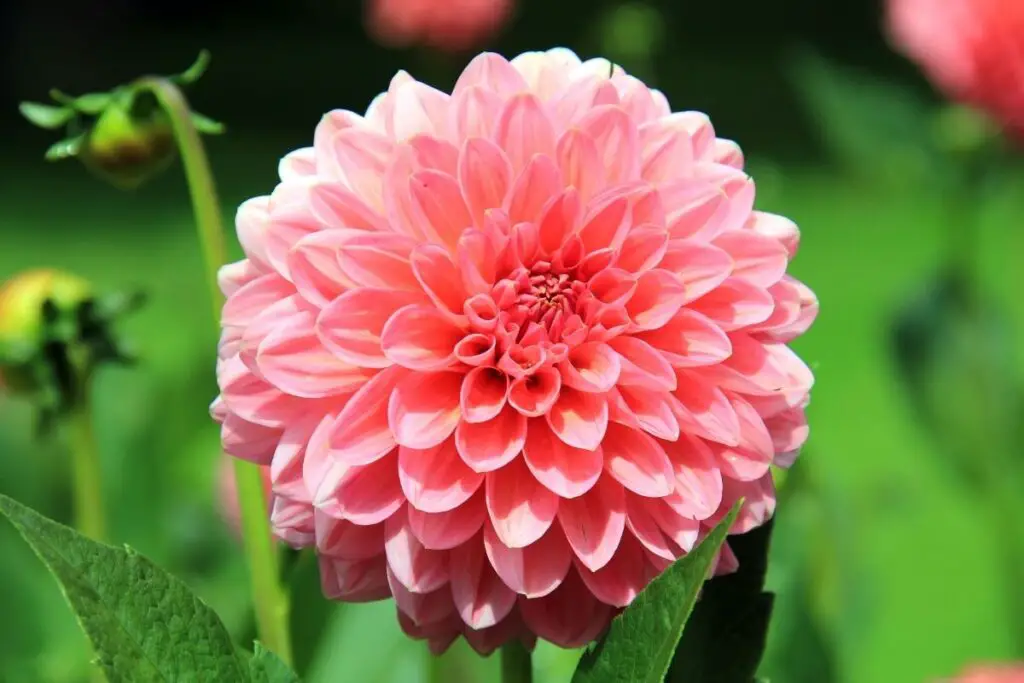
Dahlia has beautiful blooms and can thrive in full sun, making it easier for the gardener to keep them outdoors. With proper care, you will fill your space with beautiful, colorful, and oversized flowers.
Sunlight: Dahlias appreciate the abundance of light and require full sun to grow stunning blooms. You can keep it in the shade during the afternoon in hot weather.
Watering: As dahlia grows from tubers, do not water until they sprout. After planting tubers in the spring, water it thoroughly to allow the water to reach the root system. Water to keep the soil moist, especially during hot weather.
Fertilizer: Fertilize dahlias with high phosphorus content and low nitrogen content. Fertilizing is crucial for dahlias to grow bigger and produce bigger flowers.
General care: Plant dahlias in a well-draining, organically rich soil mix with a pH level of around 6.5. You can add peat moss to improve the water retention quality of the soil. They like warm temperatures and will struggle in freezing temperatures.
Bee Balm
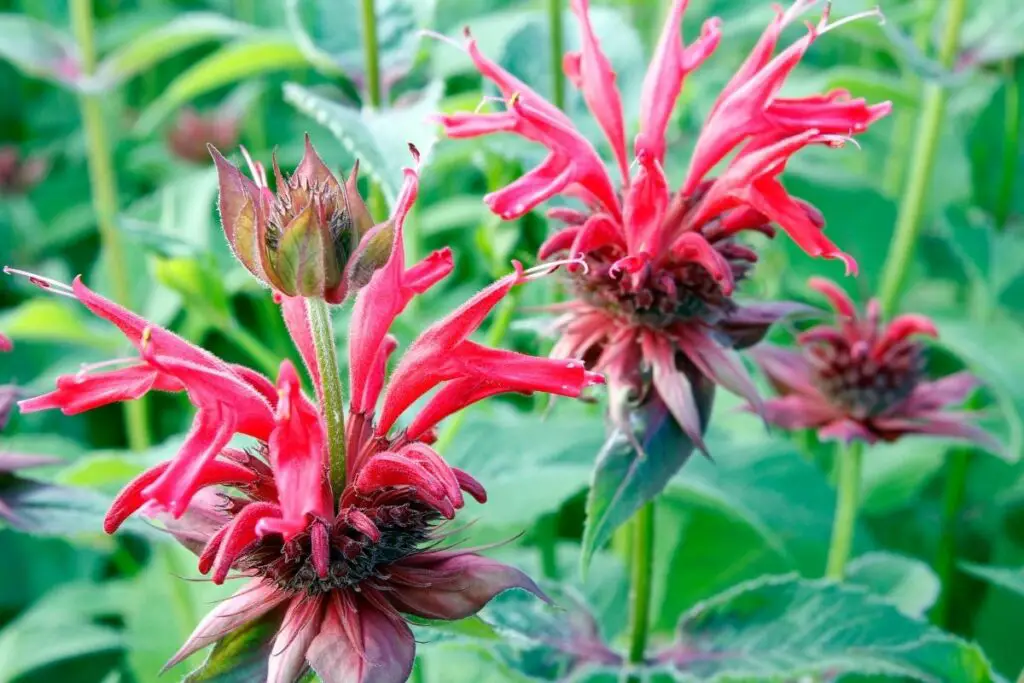
Bee balm is known to attract bees, butterflies, birds and add color to your home garden with its vibrant flowers. They thrive in full sun and can be kept outdoors without getting burnt.
Sunlight: Bee balm likes and grows best in full sun, and they can be grown in the shade too, especially in the shade in intense sun. Low light can lead to leggy growth and affect flowering.
Watering: Water bee balm to keep the soil evenly moist, especially during the first year of growth. Also, avoid overwatering or neglecting the watering needs of the plant. Do not wet the foliage while watering.
Fertilizer: Feed bee balm with compost or organic matter to improve its nutrient content. You can add balanced fertilizer in the growing season.
General care: Bee balm likes light and fertile soil as it allows easy water and airflow. To increase its water retention, you can add mulch if the soil dries out faster. Also, they can handle cold and very hot temperatures gracefully.
Tropical milkweed
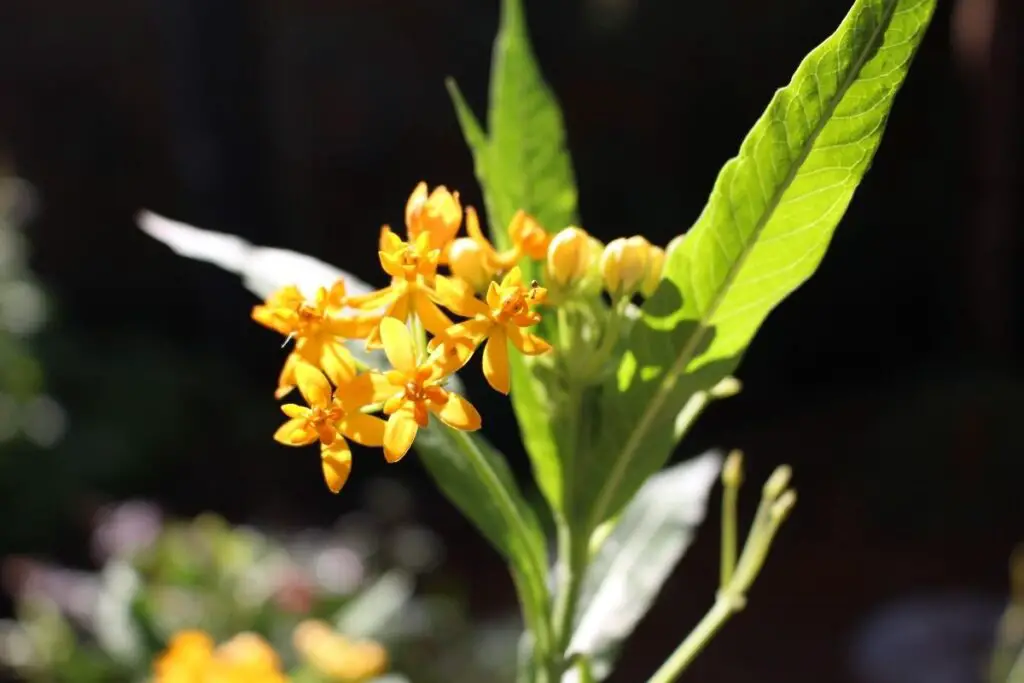
Tropical milkweed is a hardy, sun-loving plant and adds color to your balcony, garden, etc. It produces clusters of yellow and orange flowers and grows up to 3 feet tall.
Sunlight: Tropical milkweed enjoys a lot of light and will thrive in full sun. You can keep them in the shade too, but an abundance of light is vital for best and optimal health and growth.
Watering: Tropical milkweed needs moderate watering and should not be overwatered. Water it to keep the soil slightly moist. Avoid keeping the soil dry for too long.
Fertilizer: Tropical milkweed is a light feeder and can thrive even without feeding. You can add 3-4 inches of mulch to the soil on the top to help the plant survive freezing temperatures.
General care: Trim the top of the plant to have a bushier plant and more flowers. Please keep them in warm temperatures and appreciate acidic, slightly alkaline soil.
Looking for gardening supplies? We have tested 100's of products before recommending them to you guys. Check out our best pick below:
| Image | Gardening Supplies | Best Price? |
|---|---|---|
 Top
Top Top
Top | Raised Garden Bed Kit | Check On Amazon |
 | XLUX Soil Moisture Meter, Plant Water Monitor, Soil Hygrometer Sensor for Gardening, Farming, Indoor and Outdoor Plants, No Batteries Required | No Results |
 Top
Top Top
Top | 82 Pcs Garden Tools Set and Extra Succulent Tools Set | Check On Amazon |
 | Joeys Garden Expandable Garden Hose with 8 Function Hose Nozzle, Lightweight Anti-Kink Flexible Garden Hoses, Extra Strength Fabric with Double Latex Core, (50 FT, Black) | No Results |
 Top
Top Top
Top | Dual Chamber Compost Tumbler | Check On Amazon |
 Top
Top Top
Top | Sunnyglade Plant Stakes | Check On Amazon |
 Top
Top Top
Top | Organic Cold Pressed Neem Seed Oil | Check On Amazon |
 Top
Top Top
Top | Mighty Mint Gallon :-Insect and Pest Control Peppermint Oil | Check On Amazon |
 Top
Top Top
Top | Scotts DiseaseEx Lawn Fungicide | Check On Amazon |
 Top
Top Top
Top | Jacks Classic 20-20-20 All Purpose Fertilizer | Check On Amazon |
 Top
Top Top
Top | 30,000 Seeds Pollinator Attracting Wildflower Mixture | Check On Amazon |
 Top
Top Top
Top | Survival Vegetable Seeds Garden Kit-Over 16,000 Seeds | Check On Amazon |
Euphorbia
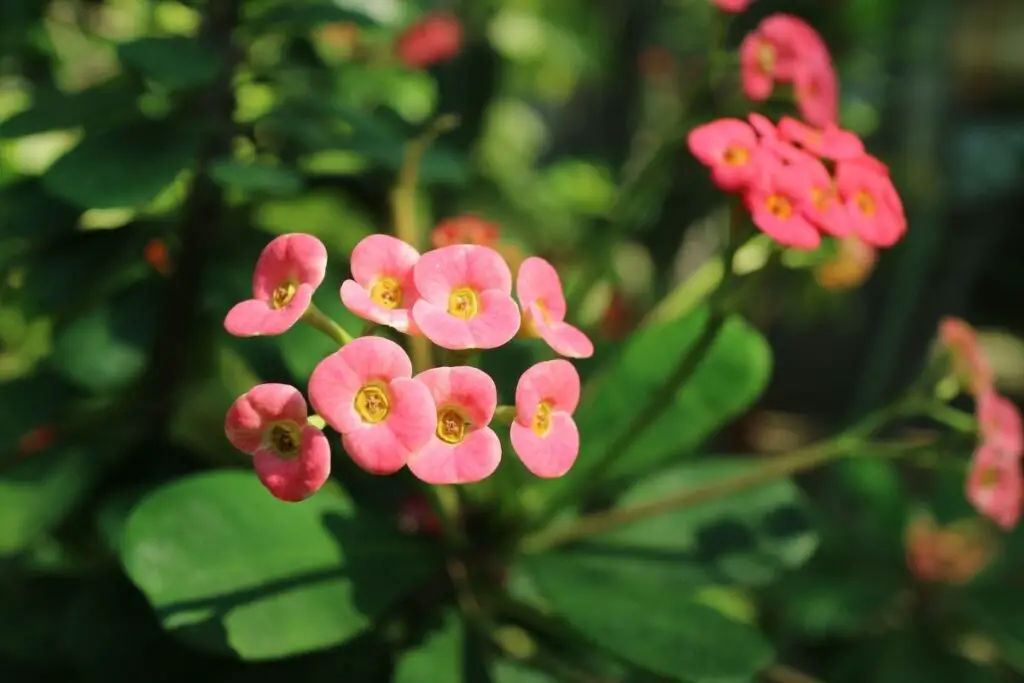
Euphorbia can flower all season long, be easy to care for, and produce opening white blooms. They are sun-loving plants.
Sunlight: Euphorbia grows and develops well in full sun. They like full sun and flowers best in partial shade.
Watering: Water euphorbia regularly to keep the soil moist. Water it regularly to avoid getting out of the soil during hot summers. Do not overwater as it can lead to root rot.
Fertilizer: Euphorbia is a light feeder and can survive even without feeding. You can feed with liquid fertilizer or balanced fertilizer to grow bushy plants and beautiful flowers in the growing season.
General care: Plant euphorbia in a well-draining soil mix and pot with the proper drainage system. They like moderate to warm temperatures and average humidity.
Mandevilla vine
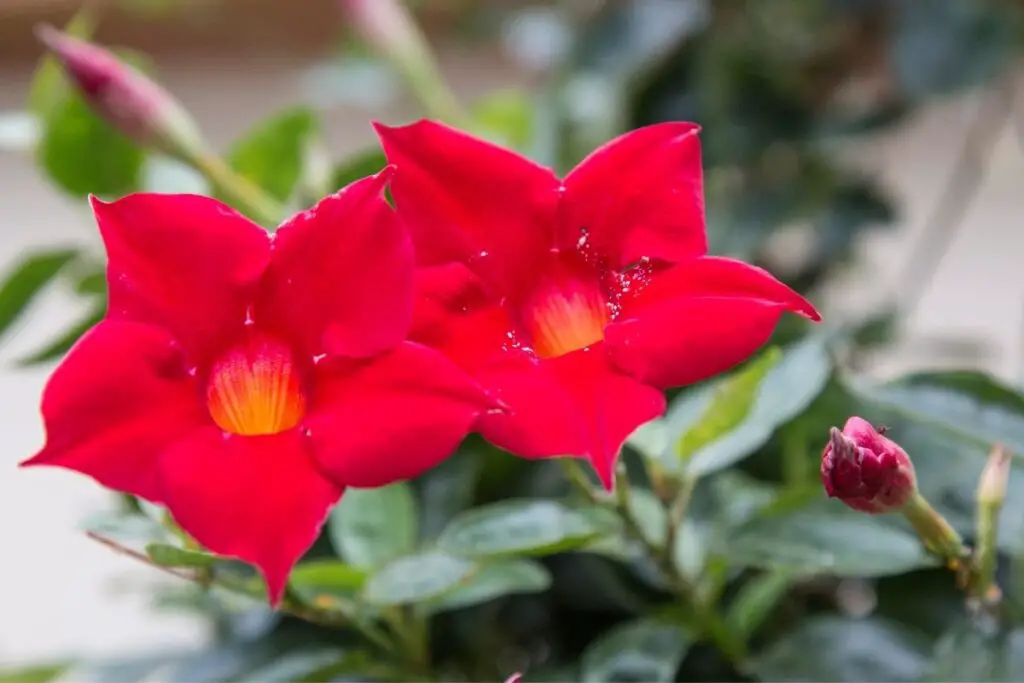
Mandevilla vine has beautiful flowers in different shades such as pink, red, white, and yellow. They can bloom all year round in warm climates and appreciate the full sun. They have glossy leaves and are resilient that can be grown outdoors or indoors.
Sunlight: Mandevilla vines grow and bloom best in full sun. Give them 6-8 hours of direct light for optimum growth. You can keep them in some shade, especially during the hot afternoon sun.
Watering: Water Mandevilla vines to keep the soil evenly moist and not soggy. They can withstand dry soil for some time but appreciate damp soil. Make sure the excess drains out after watering.
Fertilizer: Fertilize Mandevilla vines during spring to boost their growth with a slow-release balanced food. You may also feed with liquid fertilizer by diluting it to half the strength.
General care: Mandevilla vines like sandy, light soil mix with a proper drainage system. They like temperature levels above 60°F and not below 50°F. If the climate is dry, mist around them regularly to maintain humidity.
Peony
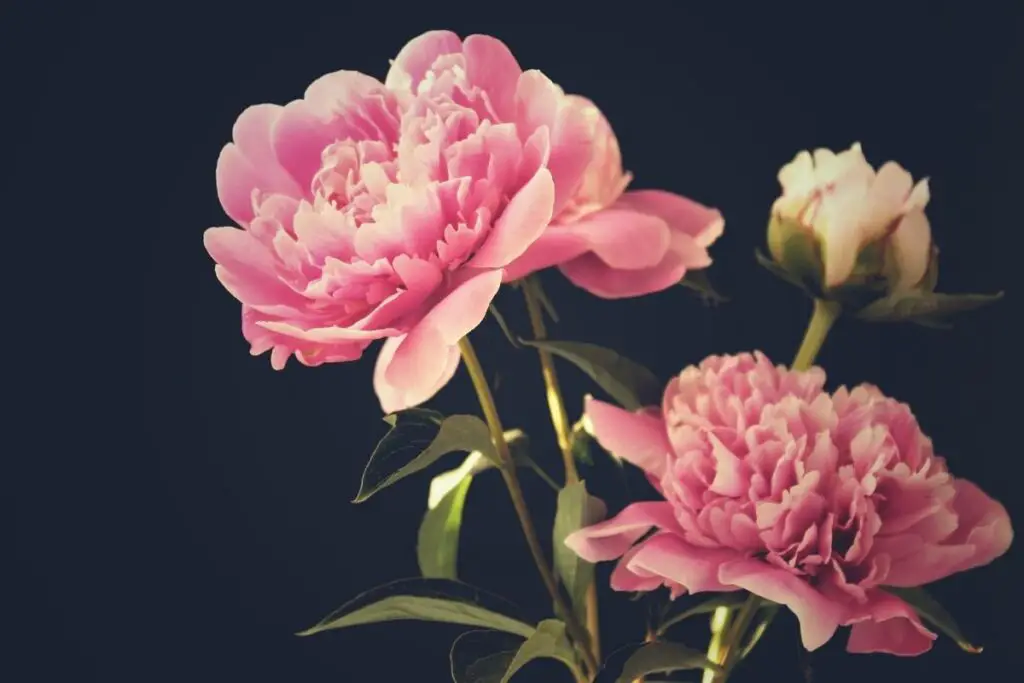
Peony has dark green leaves that produce stunning flowers with a soothing fragrance. They bloom and grow best in full sun, and they flower in most of the colors except for blue.
Sunlight: Peonies like full sun, so keep them in direct light for long hours. During harsh summer, keep the plant in partial shade.
Watering: Water peony to keep the soil evenly moist. Do not overwater it as it hates wet feet. Water only when the soil is dry and ensures proper drainage.
Fertilizer: Fertilize peony in early spring with balanced fertilizer or compost after blooming has been completed and deadheaded. If the soil is rich and fertile, you do not need to fertilize at all.
General care: You can use three-legged metal rings or wire cages to support peony’s gigantic blossoms. During fall, cut the leaves to the ground to avoid pests and diseases.
Russian sage
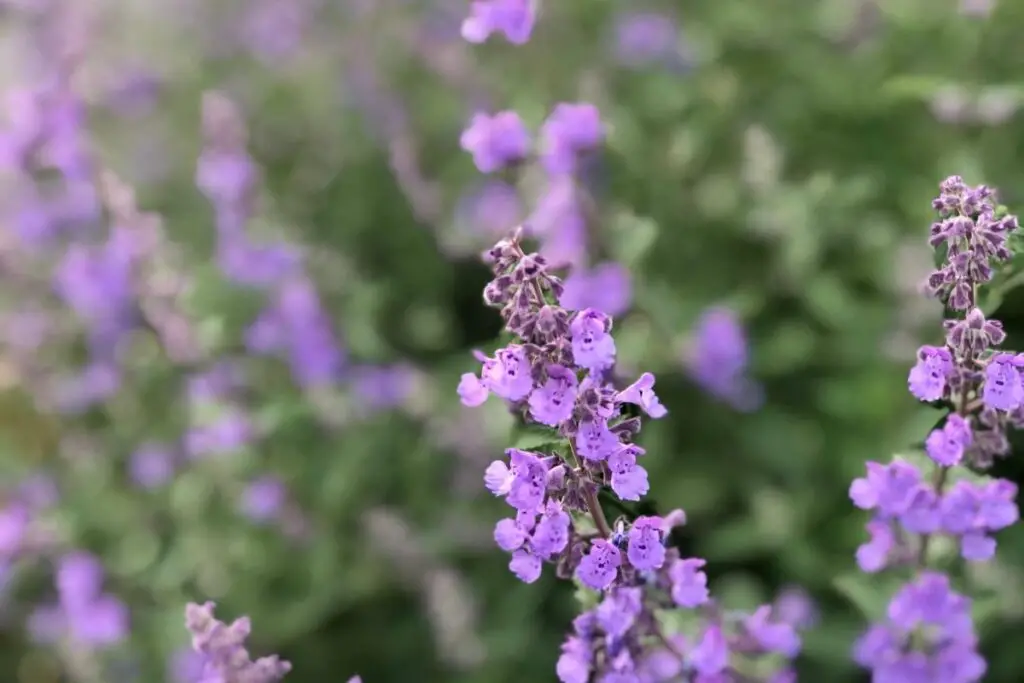
Russian sage has spiky purple flowers and silver-grey foliage, and it looks admirable. They need a lot of light and grow best in full sun. They can easily tolerate intense, harsh sun and may look dull in low light or shade.
Sunlight: Provide Russian sage with a lot of light. Choose a space where they can receive hot intense direct sunlight. The stems stretch for light; if you move them in the shade, the plant starts to droop.
Watering: Water Russian sage occasionally when the soil is completely dry. They don’t need regular watering, and too much watering may even kill them.
Fertilizer: Fertilize Russian sage in late fall with balanced fertilizer or compost. Feed the plant with a handful of whatever food you choose.
General care: Prune Russian sage in summer and spring. During spring, cut 1/3rd of the stems, and you can trim half of the stems if the plant is not flowering during summers.
Columbine

Columbine is a beautiful flowering plant with dark green leaves and flowers that come in various colors. They like and grow best in full sun, and their spark will dull if grown in low light. They are known to drop seeds that will re-grow in new plants.
Sunlight: Columbine can tolerate full sun and appreciates partial shade in the harsh afternoon sun. They like and need a lot of light to thrive and bloom.
Watering: Water columbine when the soil is dry from top-up to a few inches deep. If the plant is young, keep it evenly moist but don’t drown the soil. Keep the soil moderately moist when the plant is matured.
Fertilizer: Feed columbine with balanced diluted fertilizer once every month in the growing season from spring through fall. This will encourage healthy leaves and beautiful blooms.
General care: Plant columbine in light, well-draining loamy soil mix and add compost while planting to make the soil organically rich. Please keep them in warm and cool temperatures and avoid frost.
Petunia
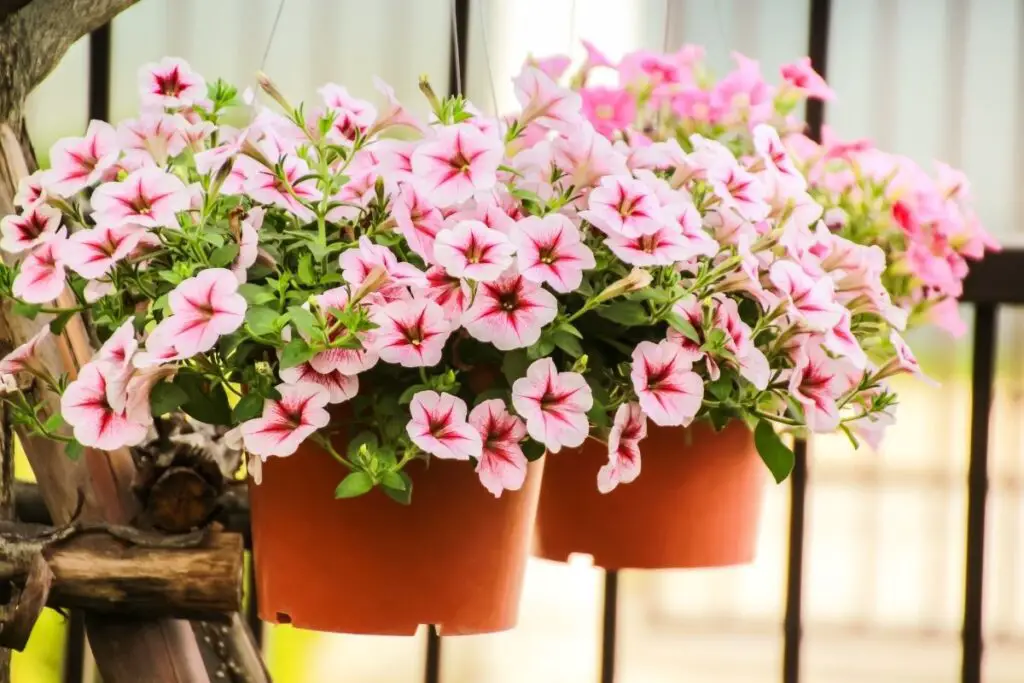
Petunia charms everyone with its trumpet-shaped blooms that come in almost every color except blue. They are easy and fast-growing and grow best when kept in full sun, and they are resilient and grow up to 2 feet high.
Sunlight: Petunia grows and develops best in full sun; they are happiest in 6 hours of direct light. However, some shade is good when the sun is too intense during afternoons.
Watering: Water petunias when the soil is halfway dry and do not let it bone dry. Also, water to keep the soil moist and not soggy. Make sure the drainage system of the pot is proper.
Fertilizer: Feed petunias with balanced fertilizer made for flowering plants from July till fall declines once every month. During planting, add fertilizer and some compost to the soil to increase the soil richness.
General care: Petunias prefer a temperature between 60°F to 75°F during the day and up to 55°F at night. Avoid keeping them outdoors in frost and freezing temperatures. They prefer low to moderate humidity.
Snapdragons
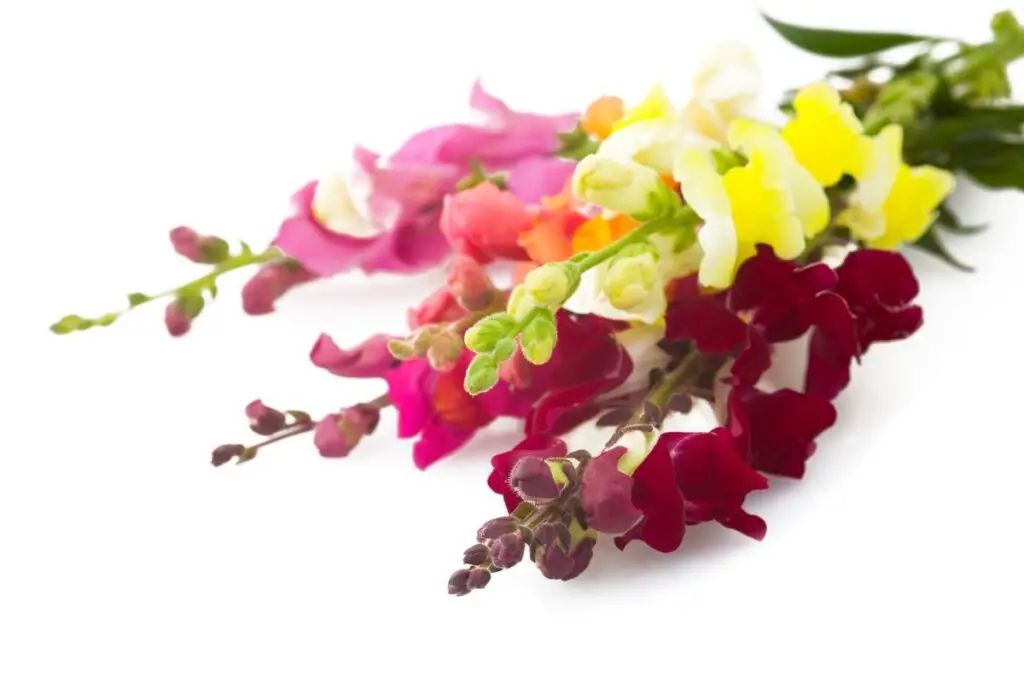
Snapdragons flowers look like the snout of a dragon which comes in shades of pink, white, purple, etc. It likes a lot of light and will flourish best in full sun. They make a great addition to your garden or indoor space with their blooms.
Sunlight: Snapdragons grow and bloom best in full sun. They appreciate partial shade, especially when the sun is intense.
Watering: Water snapdragons adequately to keep them thriving. Water it to keep the soil moist and let the soil dry out completely. Do not water from the top as it can lead to leaf diseases.
Fertilizer: Feed snapdragons when the plant starts producing flowers and use balanced diluted fertilizer. Water the plant before fertilizing to allow the fertilizer to assimilate evenly into the soil.
General care: Snapdragons prefer cooler temperatures and offer best in low temperatures is 40°F. An established snapdragon withstands sub-freezing temperatures.
Campanula
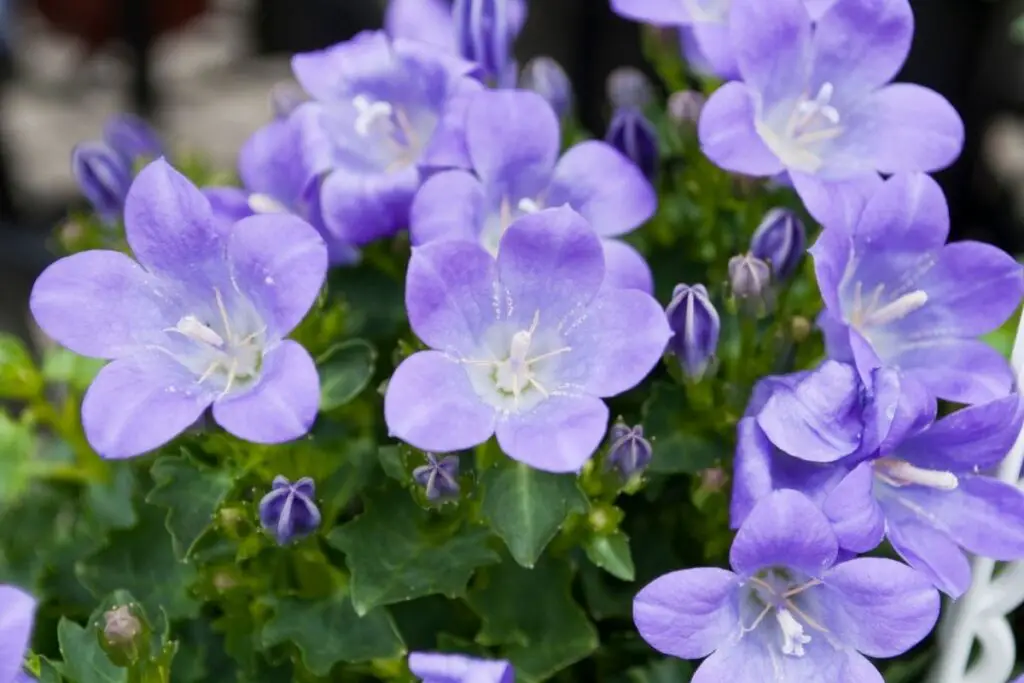
Campanula produces a variety of flowers with both upright and low-growing varieties. It is hardy and
Sunlight: Campanula likes a lot of light, exposing them to good lighting for best performance. During hot summers, they would appreciate some shade.
Watering: Water campanula to make sure the soil is moist. Check the soil before watering and water if the soil feels dry to the touch. Ensure a proper drainage system to ensure the excess water is not sitting in the soil.
Fertilizer: Fertilize campanula in spring with low nitrogen fertilizer or compost and then in mid-summer. You can also use mulch around the plant base; it will strengthen the plant.
General care: Keep your campanula in a well-ventilated space. They are cold-hardy, they can tolerate low-temperature levels. Check the species you are planting and keep them in their ideal temperatures.
Scaevola
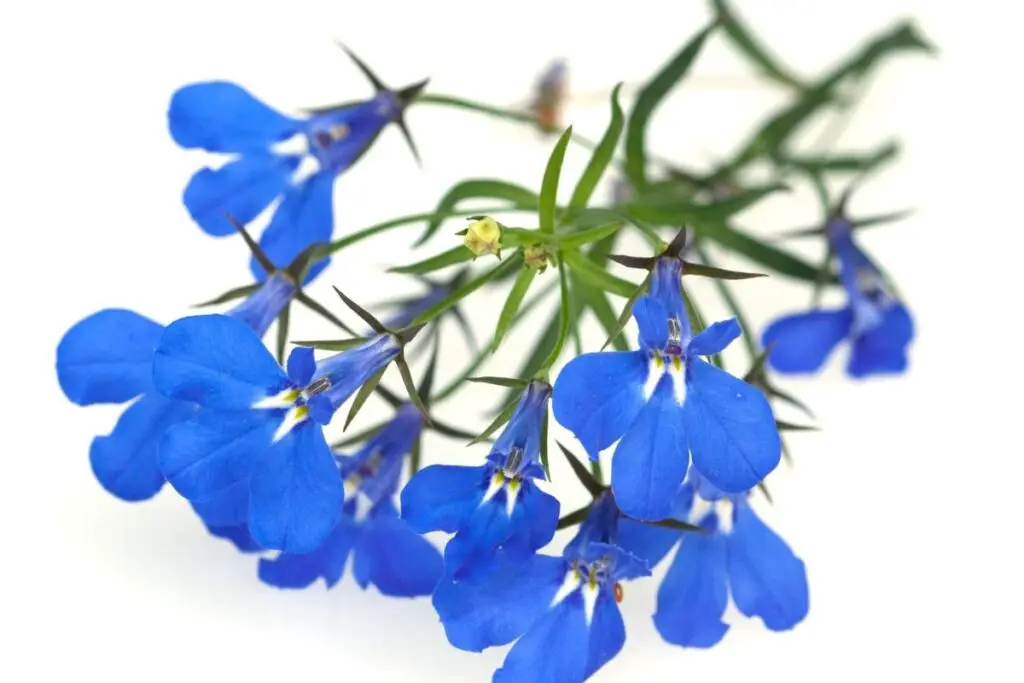
Scaevola famously has a fan following and is the perfect plant to keep it full sun. They are heat tolerant and low maintenance, and it has thick stems which store moisture, due to which the plant is drought tolerant even in too high temperatures.
Sunlight: Keep Scaevola in full sun or partial sun. They perform best in full sun and can be kept outdoors in hot summers. In desert areas, please keep them in partial shade.
Watering: Scaevola likes to stay dry but will appreciate occasional watering. Keeping them wet for too long may attract pests and diseases or result in root rot. Water it when the soil is dry.
Fertilizer: Fertilize with balanced flower fertilizer with a low phosphorus content. Feed once every month only in the growing season. Phosphorus causes flower and leaves discoloration, due to which low content is advised.
General care: Keep your Scaevola in warm to hot temperatures. Please do not keep them at a temperature level below 60°F. Also, they prefer high humidity make an effort for the same. Do not repot them regularly; they can live without being repotted at all.
Lantana
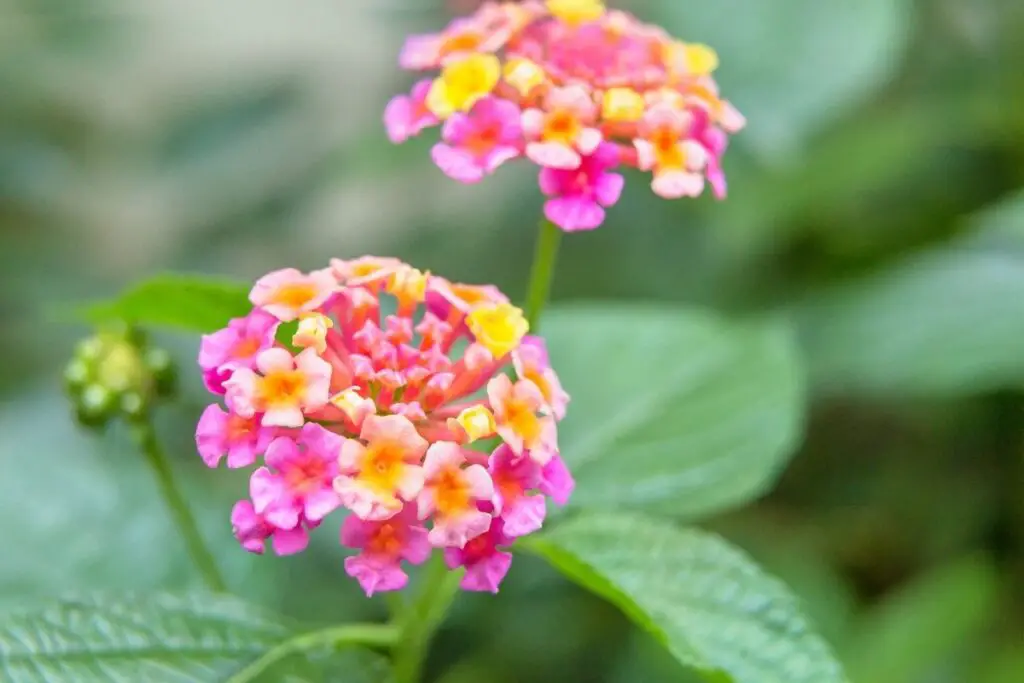
Lantana produces clusters of small flowers in bright colors like yellow, orange, white, pink, red, blue, etc. they like full sun and will grow and bloom best in full sun. It is a fast-growing, low-maintenance annual plant.
Sunlight: Lantana appreciates full sun or partial sun. They perform best when given 6-7 hours of direct light, and it will not flower up to the march if grown in low light.
Watering: Water lantana to keep the soil moist and water when the soil is halfway dry from the top. Do not let the soil dry out completely, and also do not let the soil drown.
Fertilizer: Fertilize lantana in early spring with a balanced flower fertilizer. They are light feeders and do not need much fertilizing as they may decrease flowering too.
General care: Lantana can tolerate temperatures as low as 28°F. If the temperature level is low for a long period, the plant may die. Keep in temperature levels above 55°F. Keep humidity from average to high.
Chrysanthemum
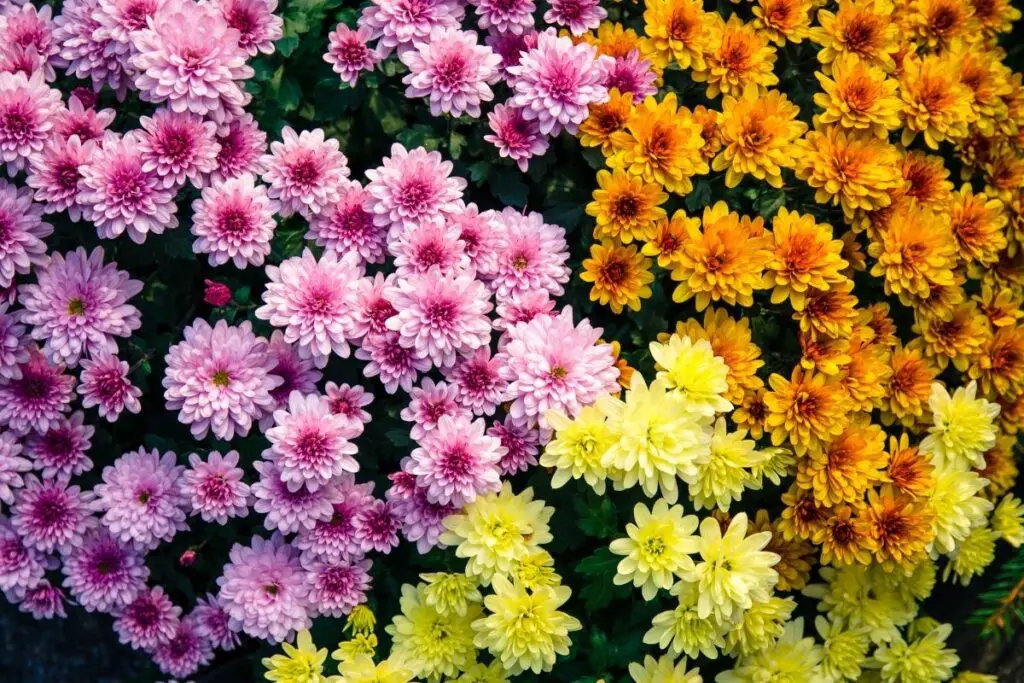
Chrysanthemum initially grown as an herb produces flowers in various colors from white to deep bronze and has dark green leaves. Its florets, when clustered together, it gives us mum blooms. It needs a lot of light to thrive and bloom optimally.
Sunlight: Chrysanthemum loves the sun and appreciates 6-7 hours of direct light. For bushy leaves, an abundance of flowers and strong plants provide them with a lot of light. During cooler months, you can grow lights artificial light sources.
Watering: Water chrysanthemum to keep its soil evenly moist. During hot months, keep the plant hydrated and do not let the soil dry out completely. During cooler months, water when the soil is fully dry. Water from the base of the plant and avoid overhead watering.
Fertilizer: Chrysanthemum appreciates fertilizing as it will give them a nutrient boost. They are heavy feeders, so feed them with balanced diluted fertilizer once every month from spring through summer. Do not fertilize fall mums until spring.
General care: Chrysanthemum should be kept in good air circulation as grouping them will attract pests and diseases. Apply mulch during winter to help them maintain an even temperature to tolerate winter temperatures.
Hardy geranium
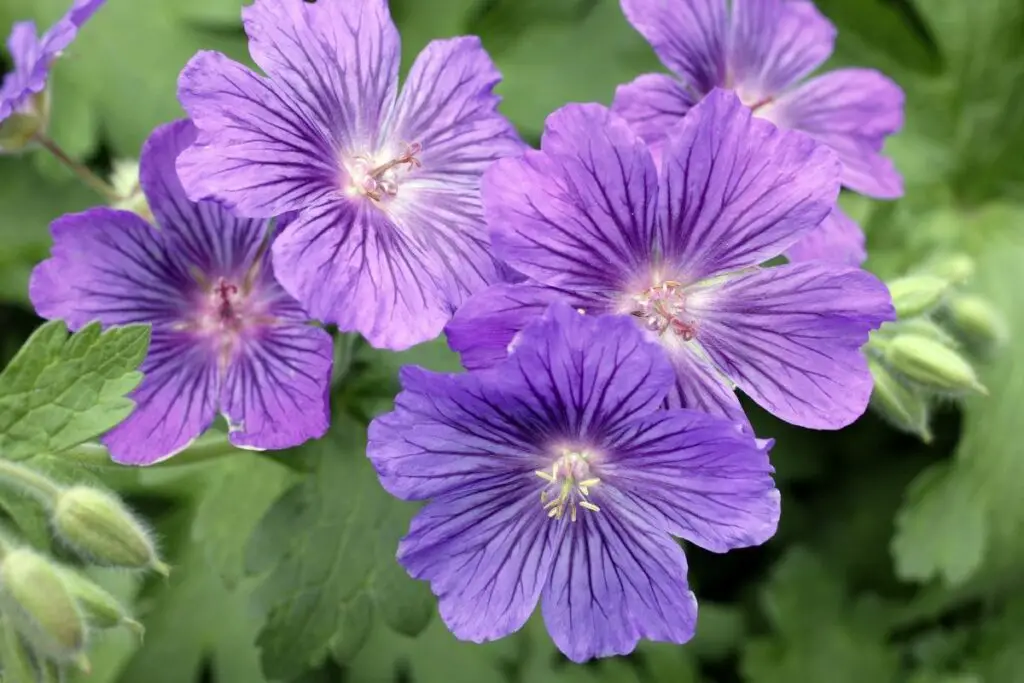
Hardy geranium produces small flower stalks in pink, purple, white, magenta, and blues. It has a spicy fragrance and lasts long. They are hardy plants and appreciate a lot of light, and it is one of the plants that like full sun.
Sunlight: Hardy geraniums can grow in a wide range of lighting. They appreciate and perform best in full sun, and they will grow in low light but may not blossom as fully as they would have in full sun.
Watering: Water hardy geraniums when the soil is dry. Touch the soil, and if the soil feels dry, water it. When the plant is kept in full sun, water it regularly. Do not water from the top as it can promote fungal diseases.
Fertilizer: Hardy geranium is a light feeder; it can do without fertilizing. You can fertilize if the soil quality is poor with slow-release balanced food once in spring.
General care: Hardy geraniums prefer temperature levels between 65°F to 75°F. During the night, they prefer temperature levels between 50°F to 60°F. They can grow in average to high humidity.
Catmint

Catmint is an easy-growing, low-maintenance plant. It has gray-green leaves topped with spiky blooms. The blooms are in varieties of color like white, lavender, blue, etc. It appreciates full sun and is drought tolerant.
Sunlight: catmint will grow and flower best in full sunlight. They can grow well in partial shade so that you can keep them indoors in indirect light.
Watering: Catmint when young, needs regular watering to keep the soil evenly moist. Once the plant is matured, only water when the soil is dry.
Fertilizer: Catmint is a hardy plant and low feeder. You can fertilize it by adding compost during fall and avoid feeding it for the rest of the year.
General care: Catmint prefers cool temperatures and would appreciate shade during hot summers. Do not expose them to high heat and high humidity. Avoid keeping them near heating systems.
Ref: Kansas State University, University of Massachusetts Amherst, Missouri Botanical Garden, Fertilizing annual flowers, Mississippi State University.
